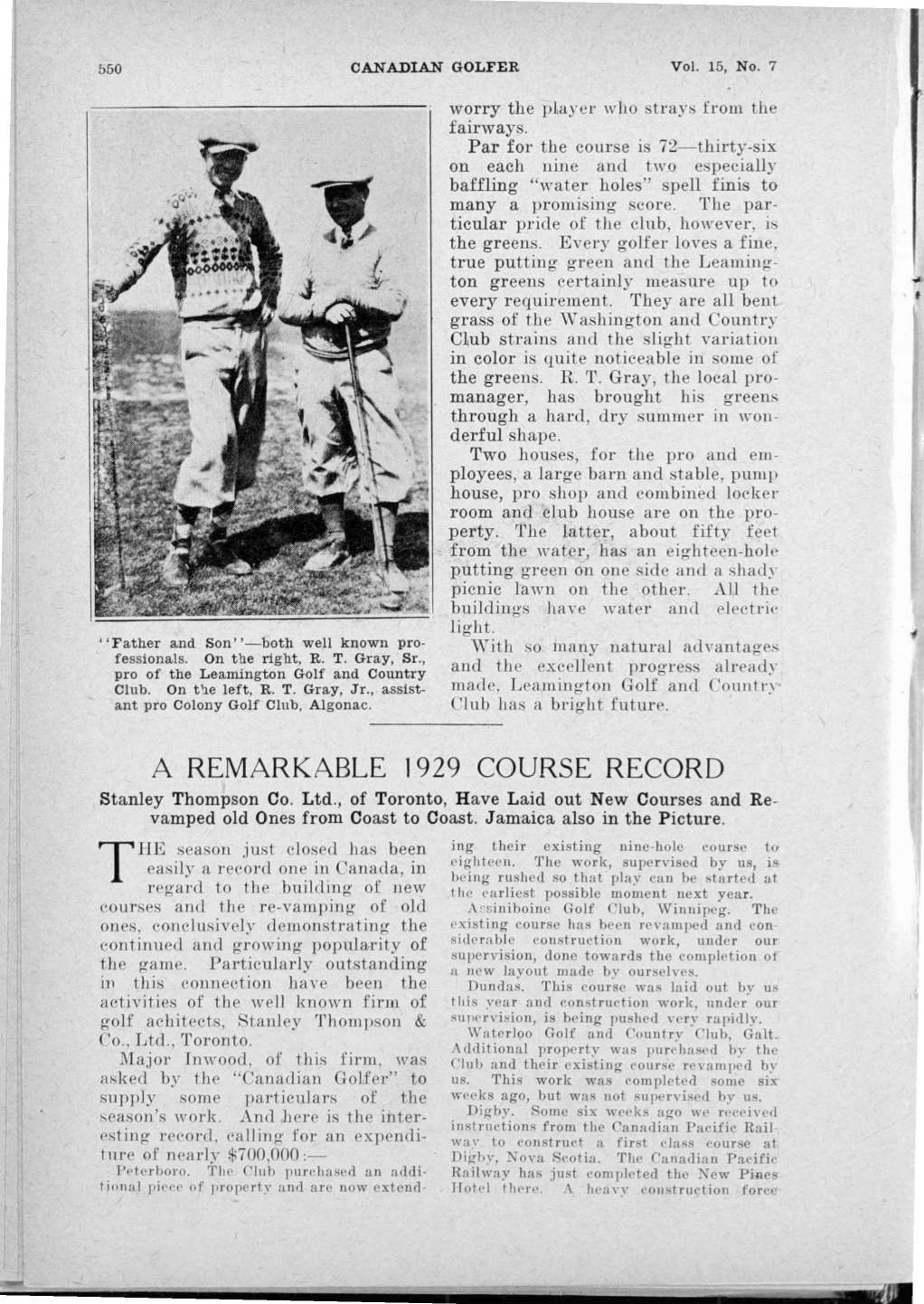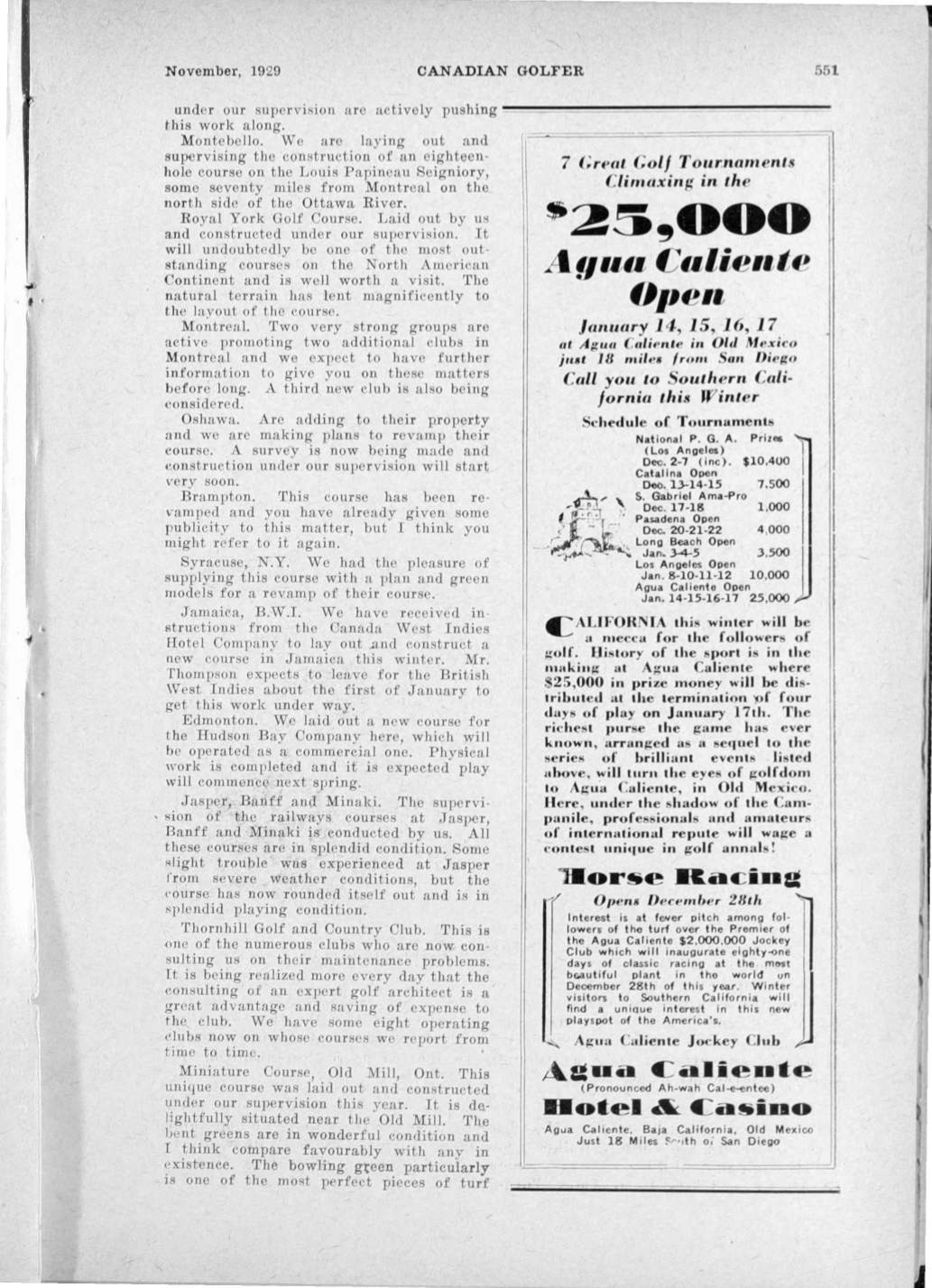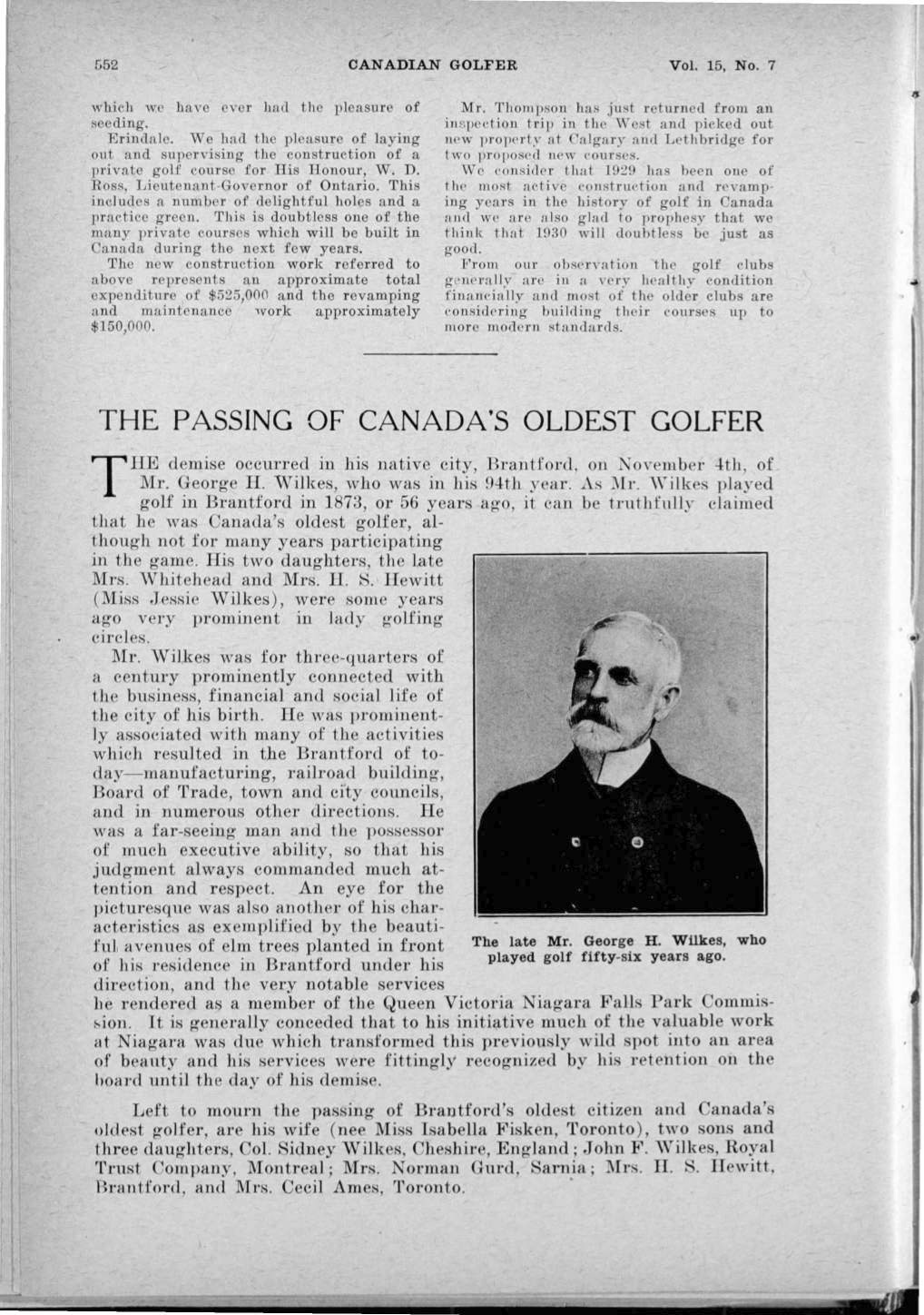Stanley Thompson’s career was extremely prolific across Canada, but when it came to locations he built and clients he worked for, it was rather predictable. A majority of his golf courses were on the two major train routes: the CNR’s northern route—Jasper Park Lodge and Waskesiu, for example; and CP Rail’s southern route—Banff Springs, St. George’s, Montebello. He would often build for high-value companies, such as the Hudson Bay Company in Edmonton (Prince Rupert, no longer exists) or the Guinness Family (Capilano), or small-town mining operations like Peninsula, Noranda, or Kenogamisis. Of course, he was prolific where he lived and grew up in Toronto and the surrounding area. For reference, the Canadian National Railway’s main route went from Port Alberni, British Columbia to Sydney, Nova Scotia (a ferry was necessary if one wanted to leave Vancouver Island), with stops at or near Capilano, Jasper Park Lodge, Waskesiu, Clear Lake, Niawka, Minaki Inn, Fort William, Kenogamisis, Noranda, Moncton, Truro, Cape Breton Highlands Links, and Lingan. In the south, CP’s main route went between Vancouver, British Columbia to Halifax, Nova Scotia, with stops at or near Capilano, Banff Springs, Tor Hill, Murray, Royal Regina, Wascana, Niakwa, Kenora, Marathon Peninsula, Sault Ste. Marie, the numerous Toronto courses he contributed to but namely St. George’s, Chateau Montebello, the Montreal courses such as Longchamp, Beaconsfield, Marlborough and Mount Royal, Digby Pines, and Ashburn’s Old course.
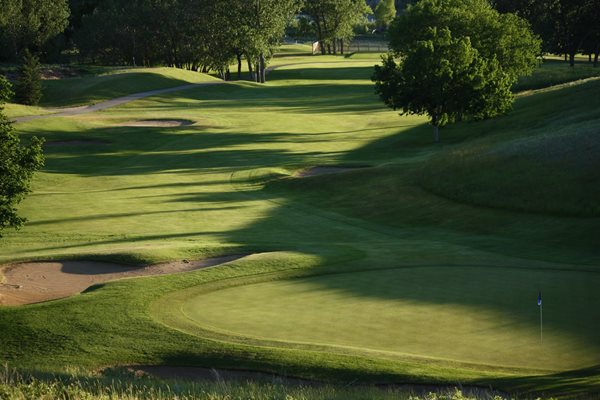

Which brings us to Lethbridge, Alberta. In 1935, Lethbridge’s population was 14,000, roughly equating for 1.9% of the province’s total population. This is historically the same number it is now, with Lethbridge’s population making up 2.2% of the total number of Alberta residents in 2022. Generally speaking, though, Lethbridge was not a hotbed for much in the early 1900s. It had coal mining, and there was no doubt an economic boom occurred pre-World War One, but compared to places like Regina, Calgary or Winnipeg, it was not on the radar for a major golf course like other prairie urban centres.
Yet in 1913, Tom Bendelow, the famed architect for Spalding with a tidy Canadian résumé that included Lambton, Royal Ottawa, St. Charles, and more, came to Southern Alberta to lay out courses in Calgary, Medicine Hat, and Lethbridge.
Bendelow would visit town in March of 1913, according to the Lethbridge Herald, building a golf course on the shores of the Old Man River. Today, this location is still the Lethbridge Country Club. Interestingly, the golf course is first referenced in the Lethbridge Herald in 1911 with construction starting, and in 1912, the golf course opened. Bendelow did not arrive until 1913, but it is entirely conceivable Bendelow came in and immediately revamped the golf course; at the time, he was an expert on laying out golf courses, and whoever laid out Lethbridge’s golf course in 1911 would not have been even if the article claims an expert was already consulted about it. Even so, the club seemed to have been founded in 1911, not 1913 as stated on the club website.
The Lethbridge Country Club is the name of an organization including thirty or forty Lethbridge citizens, municipally golf players. The club has secured an extensive area of land on the river bottom about the Piche & Miron property and has a golf expert on it already laying out the golf links. To begin with the course will be one of nine holes, which will be increased as the club grows. It is expected tennis courts will be added. A club house will be built at once. The club will be for golf more than anything else and is a semi-private affair. Lethbridge Herald, April 1911
By 1929, golf was booming in Canada and particularly at the hands of Stanley Thompson, who laid out Digby Pines, St. Leonard’s, Chateau Montebello, Dundas Valley, Erindale, Galt, Peterborough, and St. George’s all in 1929, plus a handful of renovations at places like Assiniboine, Oshawa, and more. Further, Jasper Park Lodge hosted the 1929 Canadian Amateur. In the below article, The Canadian Golfer references that 1929 was the busiest year for new golf courses in Canadian history, I suspect the same is true today.
In reference to the topic at hand, the below article gives a peak into Thompson’s career at the time, and specifically his work. At the very end of the article, The Canadian Golfer writes that “Mr. Thompson has just returned from an inspection trip in the West and picked out new property at Calgary and Lethbridge for two proposed new courses.” Interestingly, Thompson never built a golf course in Calgary, although the Stanley Thompson Society lists him renovating Calgary Golf & Country Club in 1929.
Like most history, it is almost never straightforward and just as you think you’re getting somewhere, things get messy. The Lethbridge Country Club currently has Thompson’s plan hanging in the clubhouse, with the Stanley Thompson Society listing 1933 as the year the golf course opened. The question is, was the plan ever built, and what remains today?

In a 1964 aerial, the golf course shows roughly what golfers play today: holes 1, 9, 10, 11, 15, 16, 17, 18 are all present, with the par 3, 2nd where the second half of the current 8th sits. However, Thompson’s plan (above) does not support these current holes. Sure, the current 9th (Thompson’s 1st) and the green sites for the current 17th, 18th, and 1st (Thompson’s 5th, 7th, 9th) are close enough to conceivably make a case that it might have been built. Even more messy, if one goes and walks through the hillside straight through the fairway of 15, to the right of both 16 and 17 tees, you find something that could have resembled a green pad where Thompson’s 4th is routed. Thompson’s 6th further counters this, where no remnants of a green can be found in between the current 15th and 17th.

With the Weather Man promising warmer temperatures, arrangements are proceeding space for the formal opening of the Lehtbridge Country Club golf course at the river bottom on Saturday and Sunday [June 11 & 12, 1932]. All golf members of the Lethbridge Golf Club have been extended an invitstion to be present to play over the new course, which will be in fairly good shape for the occasion. Lethbridge Herald, June 10, 1933
The above quote aligns with the Stanley Thompson Society’s 1933 claim, although no mention of Stanley Thompson is odd given his status at that point and his reputation in the province related to Banff Springs, Jasper Park Lodge, and Mayfair. If Thompson’s course did open, it seems odd the club would abandon virtually everything by 1964’s aerial (above). That aerial and Thompson’s plan have little in common, which further provides doubt. In a May 1957 article in the Lethbridge Herald, the author dives into changes to the gully of 6 fairway, although 6 on Thompson’s plan is a par 3. The 6th they’re referring to is the current par 5, 15th (photo below), which is part of where Thompson’s 4th would have been (although not a dogleg left up the hill, but straight). Further, also in the Herald in 1962, it is written that the third green (current 9th) was renovated in 1960, while the nine hole course is 3,301 yards, par 36. Thompson’s course was 3,155 yards, par 35, and while length can be added, where did the additional par come from?
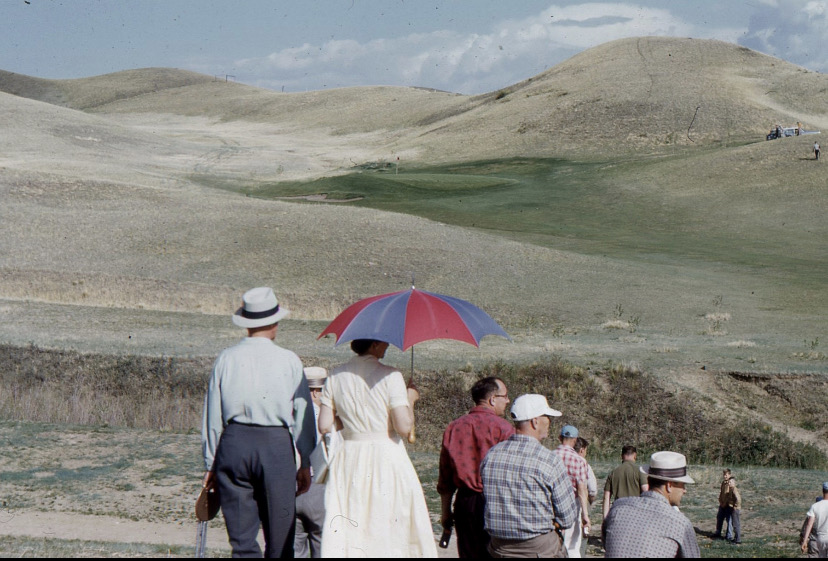
The nail in the coffin for Thompson’s course comes in an August 1938 edition of the Lethbridge Herald (attached below), which describes the golf course through photos. While the photos are unrecognizable for today’s standards, the descriptions are not. According to the article, the 2nd hole is a par 3 of 150 yards near the road which the club built through its property, the 5th green was near the 6th and 9th tee, and the 1st and 4th tees were near the 9th green. Using this info, we can assess that the par 3, 2nd to the left of the current 1st and where the 8th existed, the current 1st and 10th tees are located near the 18th green (which would have been 1, 4, 9), although the 5th green being near the 6th and 9th tee is confusing unless you’re looking back down the valley from above the current 11th green back down to the river.
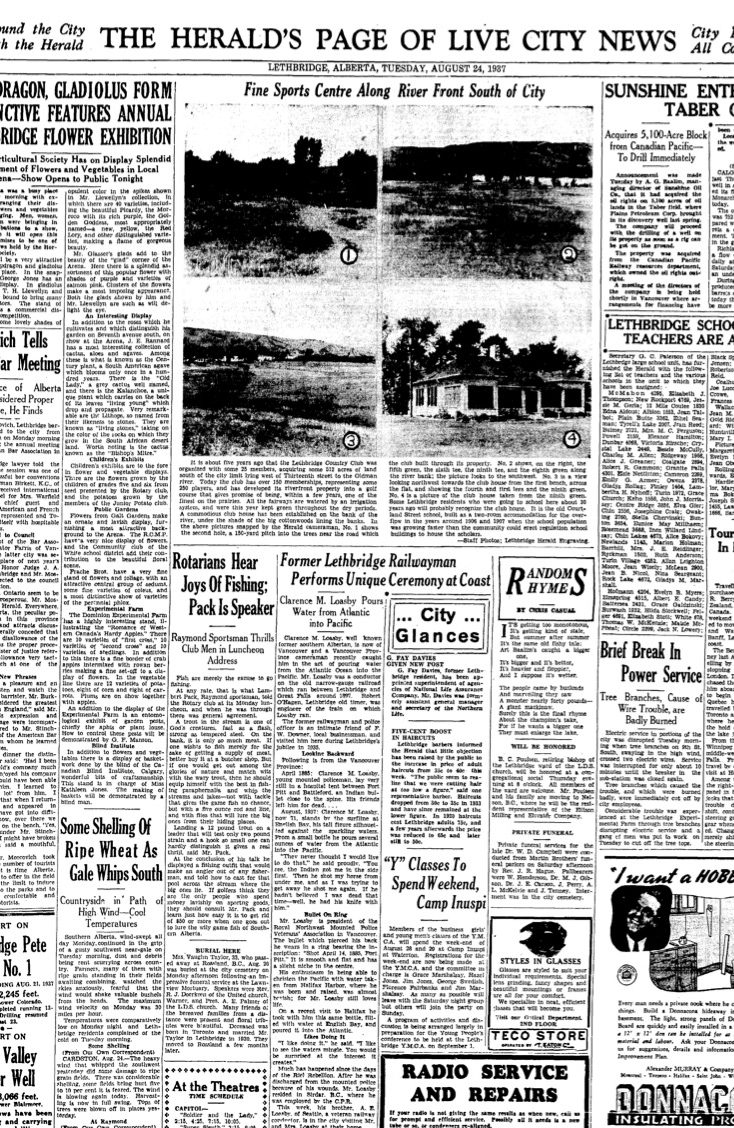
Unfortunately, Thompson’s golf course was never constructed or built. For whatever reason, the club decided to build their own layout, scrapping Thompson’s blueprint in favour of their own version. Odd, no doubt, but the club could have been in financial turmoil. In 1932/1933, The Great Depression was raging on and Thompson’s plan would be expensive to construct, especially at that time.

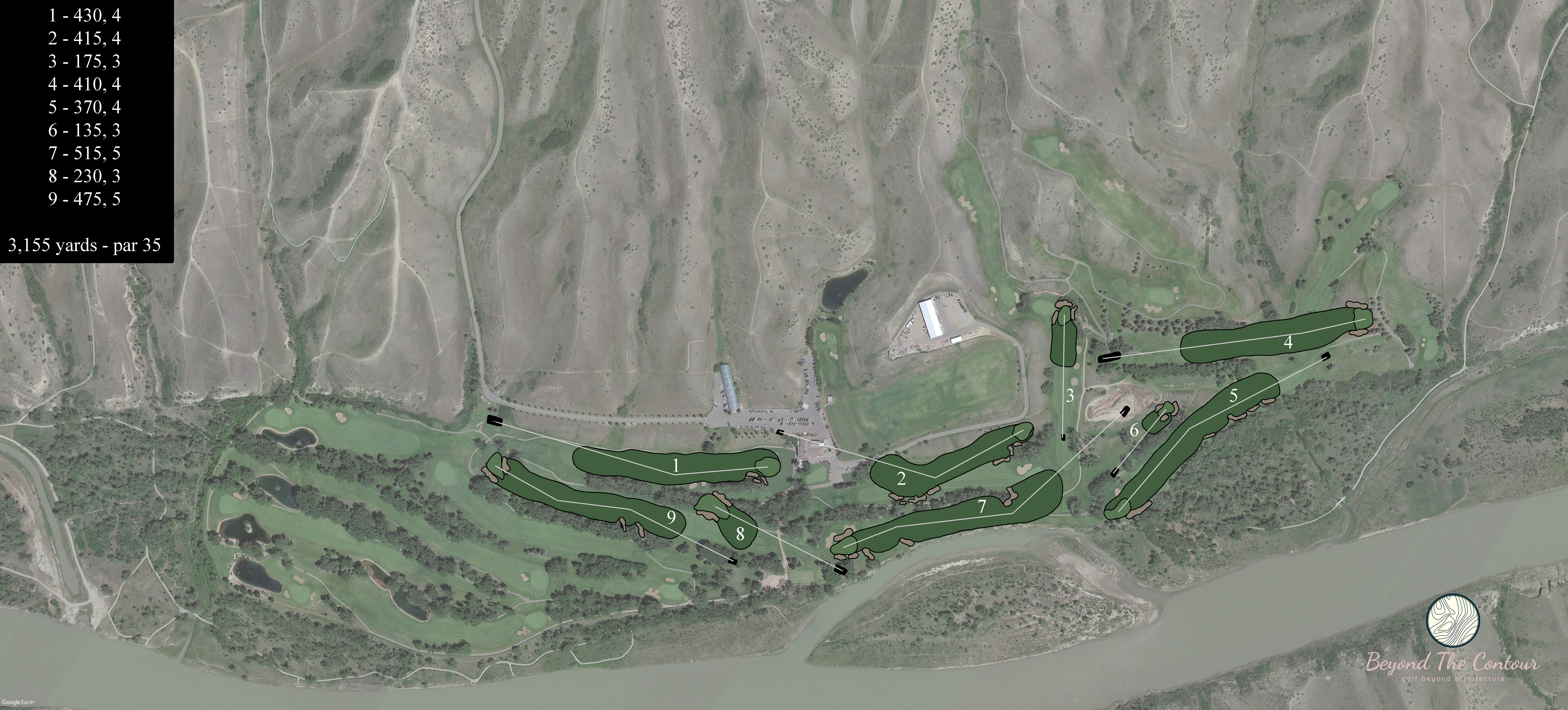
If the club was ambitious, a renovation to restore Thompson’s plan could be a solution, although pricey and rather ambitious for a smaller city in the prairies. Granted, the 2nd tee shot would never exist today, which falls off the hill and essentially plays through the clubhouse and over the corner of the driving range, but a moved tee is an easy fix. As it stands right now, the course sits on some pretty dynamic land, especially as you get to the 4th-6th on Thompson’s routing. Nevertheless, even without the prospect of building Thompson’s plan over the current layout and integrating the other nine holes, the club has taken steps to improve their layout by hiring Jeff Mingay. I will anxiously await to see the improvements to the course I grew up at, while I daydream about Thompson’s layout existing. As it stands, the course is a Tom Bendelow, Bill Robinson, Les Furber, Jeff Mingay amalgamation.




